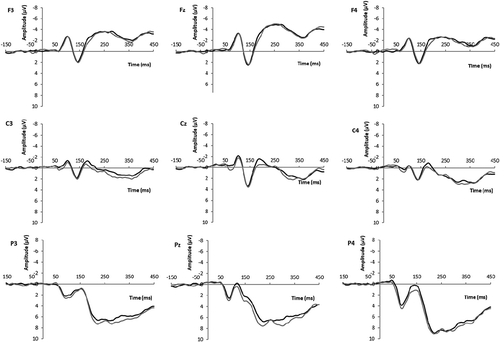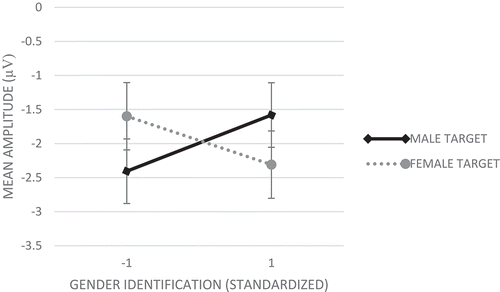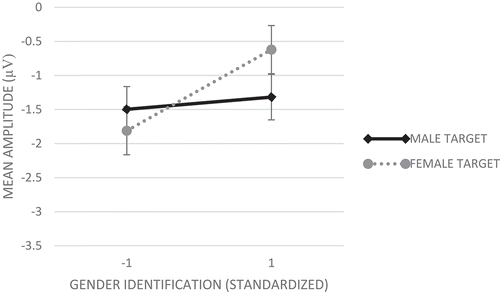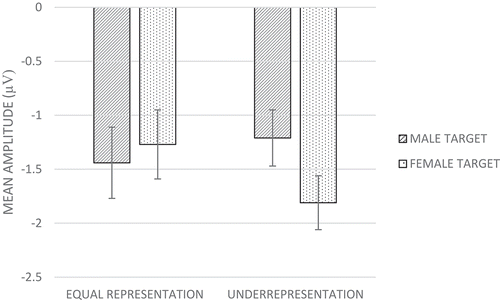Figures & data
Figure 1. ERP grand average waveforms at frontal (F3, Fz, F4), central (C3, Cz, C4), and parietal (P3, Pz, P4) electrodes for male (black line) and female (gray line) target faces (Study 1a: female participants).

Figure 2. ERP grand average waveforms at frontal (F3, Fz, F4), central (C3, Cz, C4), and parietal (P3, Pz, P4) electrodes for male (black line) and female (gray line) target faces (Study 1b: male participants).

Figure 3. Mean amplitude responses (average F3, Fz, F4, C3, Cz, and C4 electrodes) on the N100 component to male and female target faces for female respondents with a relatively low (−1 SD) and high (+1 SD) gender identification (Study 1a). More negative numbers indicating higher amplitudes. Error bars represent standard errors.

Figure 4. Mean amplitude responses (average F3, Fz, F4, C3, Cz, and C4 electrodes) on the N100 component to male and female target faces for male respondents with a relatively low (−1 SD) and high (+1 SD) gender identification (Study 1b). More negative numbers indicating higher amplitudes. Error bars represent standard errors.

Figure 5. ERP grand average waveforms at frontal (F3, Fz, F4), central (C3, Cz, C4), and parietal (P3, Pz, P4) electrodes for male (black line) and female (gray line) target faces (Study 2: female participants).

Figure 6. Mean amplitude responses (average F3, Fz, F4, C3, Cz, and C4 electrodes) on the N100 component to male and female target faces for female respondents in the equal representation and underrepresentation conditions (Study 2). More negative numbers indicating higher amplitudes. Error bars represent standard errors.

